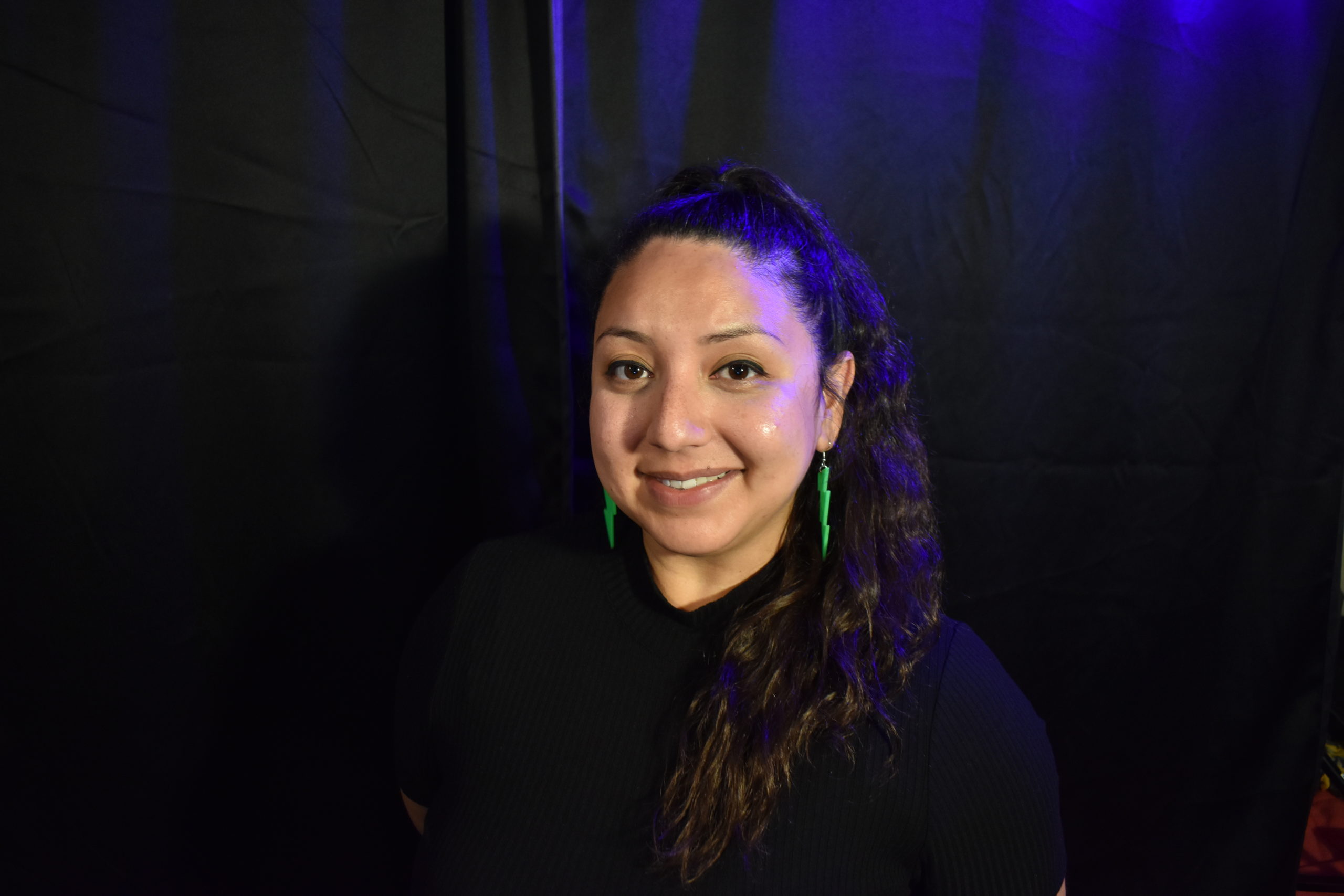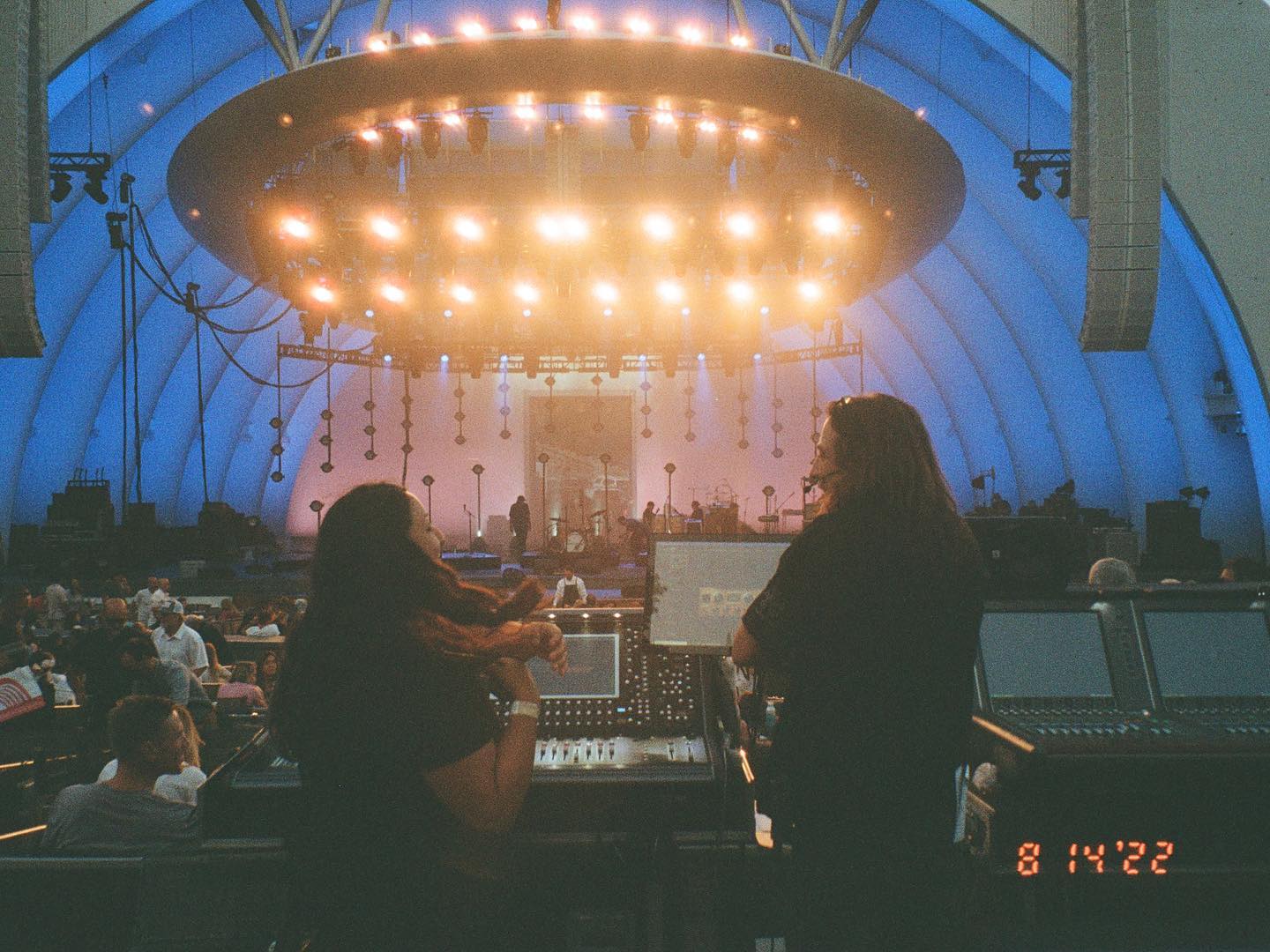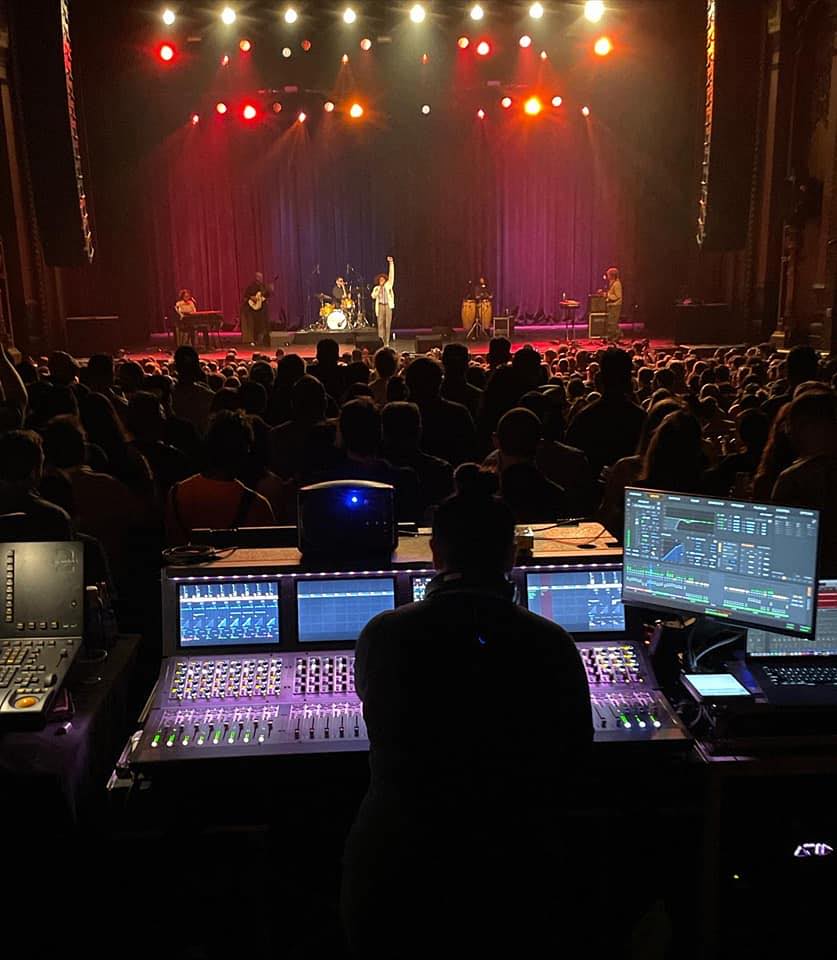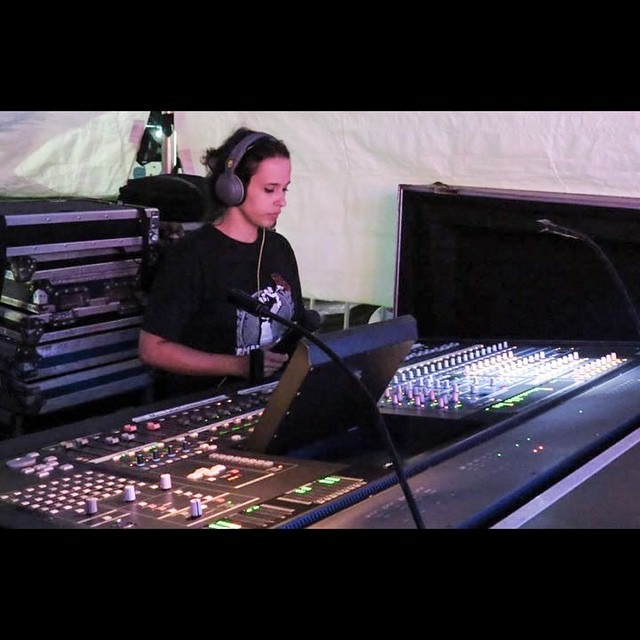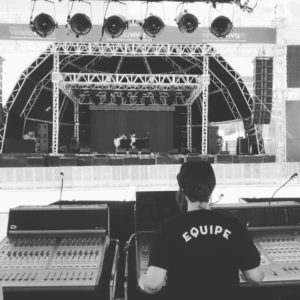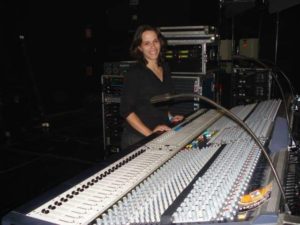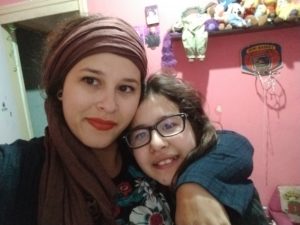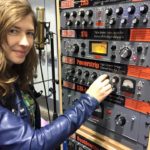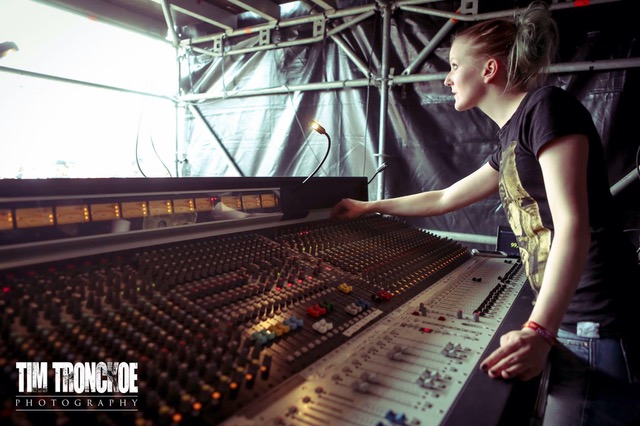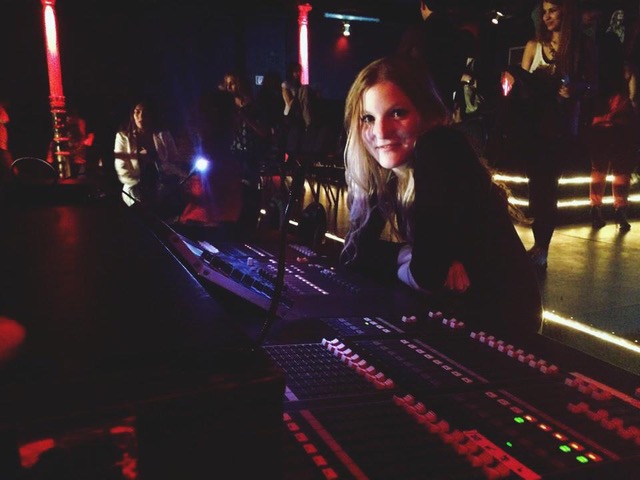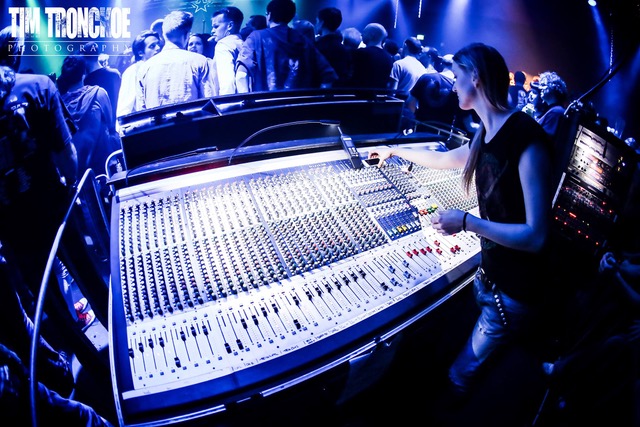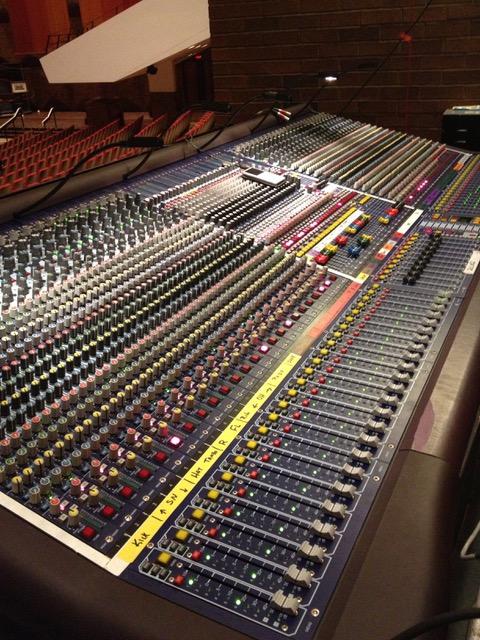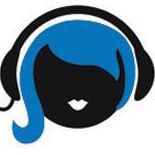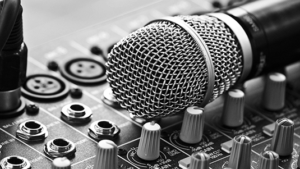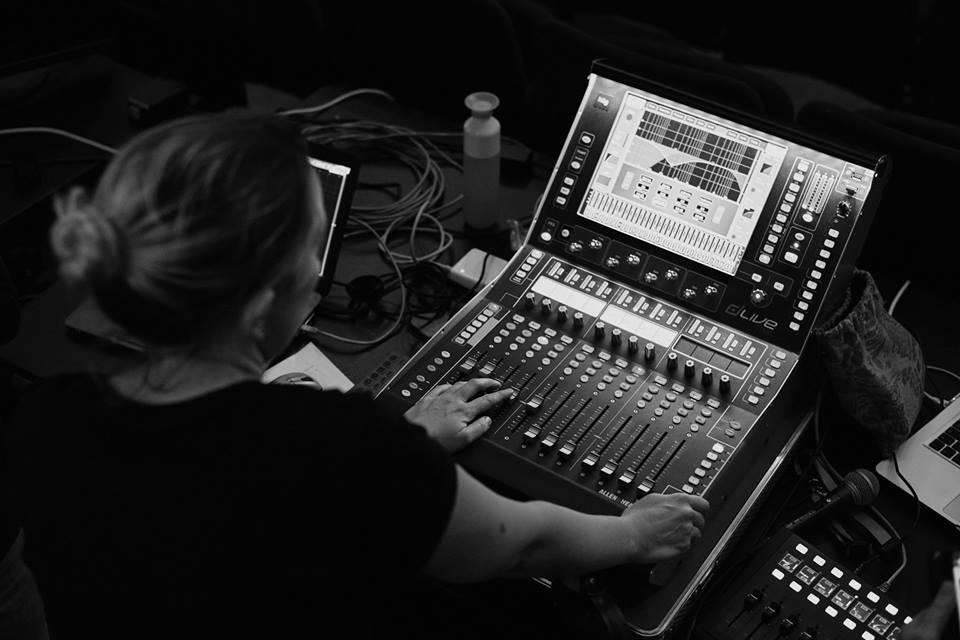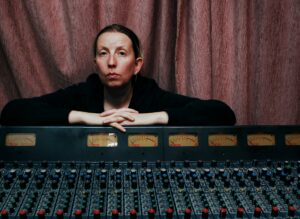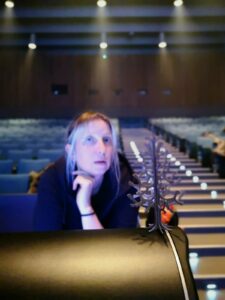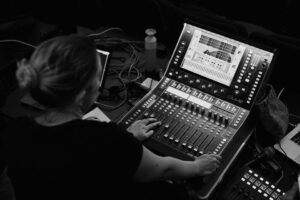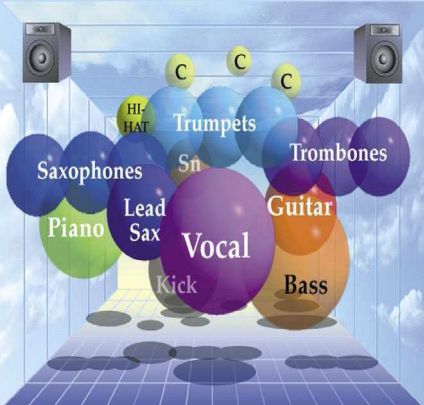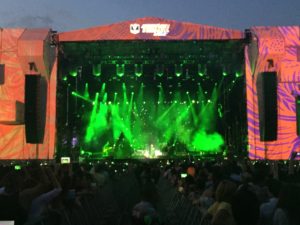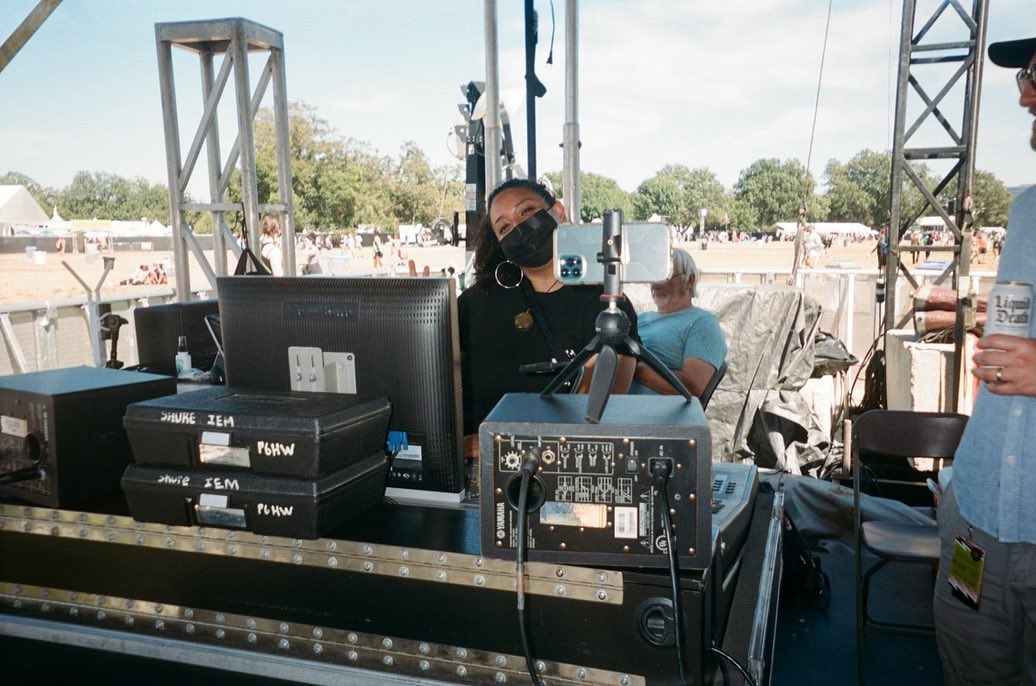
Karla Barrera Mixing at Both Ends of the Snake
Karla Barrera has been working in live sound for over twelve years and got her start working at clubs throughout Los Angeles, as a house tech, including The Viper Room. She works for Launch, and Motion Audio, and tours as FOH and Monitor engineer and is currently touring with Mt. Joy as their monitor engineer.
Karla has an extensive background in music, playing in symphonic, marching, and jazz bands, as well as drum lines. Karla says “Music was a huge part of my life and being able to play music in my teenage years really inspired me. I loved reading music and practicing whatever instrument I was into at the time while also reading the album credits on records that I loved. That’s when I discovered the people behind the recordings and production of a record. It sparked my interest in wanting to be a part of music behind the scenes.” Karla attended concerts and this solidified her path in audio, she fell in love with the ebb and flow of energy from the artists to the audience and knew she wanted to become a FOH engineer.
Karla would enroll in The Art Institute of Los Angeles and graduated with honors. She would cut her teeth interning at The Viper Room, and under the mentorship of Matt Andrade was able to focus on her mixing and teching skills. Karla credits several mentors that took the time to teach her how to be confident in her work, including; Christian Murphy, Jason Hines, Doron Dina, and Francis O’Riley (Franky Fingers).
Karla says some of the things she learned when she was starting out was signal flow on analog equipment, and considers it so valuable. She also learned that it was important to recognize signs of burnout. Karla recounts her experience with burned-out engineers “There were so many people I came across that were burned out and didn’t care as much about providing a good service to local bands. I learned that we are in a position of service to an artist and that it’s important to provide a good experience to them without ego.”
Career Now
What is a typical day like?
On tour:
Load in / set up / sound check can be from 10 am – 4 pm
⁃ Set up monitor world on stage left
⁃ Direct hands to help me flip my desk, build mic stands, run hoses across the stage, etc…
⁃ Put up antennas and Scan for new frequencies
⁃ Make sure the artist is comfortable in the new space.
Dinner break 4-7 pm
⁃ Make sure all body packs have fresh batteries.
⁃ Allows time for a shower if I didn’t get to it in the morning
⁃ Reorganize my suitcase/day bag. Has to be done every other day or else life becomes more chaotic than it already is.
⁃ Go out for dinner w other crew members / wait for the group Uber eats order/catering
⁃ Stretch
⁃ Nap
⁃ Change into show clothes. Or just fresh socks and shoes.
Show/load out 8 pm -12 am
Just to do it all again the next day (unless it’s roadie Friday)
How do you stay organized and focused?
I drink Guayaki Yerba Mate or a cafecito. Also, PACKING CUBES !!! Oh and I take notes constantly.
What do you enjoy the most about your job?
My favorite part is constantly learning and growing. I feel like, after every tour, I evolve into a new version of myself. I’m constantly soaking up new information and implementing new techniques.
What do you like least?
When you build a file on an offline editor and the venue desk does not have the latest firmware.
Just a heads up: Digico SD12 had an update in October 2022 to v1619 and the only offline editor available for download is v1619.
If you tour what do you like best?
I enjoy working directly with the artist and collaborating on ways to have the best-sounding show.
What do you like least?
Weird sleep schedules and having to wake up in the morning and find the nearest bathroom in a new city/venue.
What is your favorite day of activity?
Being in nature and getting some fresh air. It’s important to get off the bus or out of the venue and connect with the earth.
What are your long-term goals?
I have some bucket list venues I would love to mix shows at (Madison Square Garden, Sydney Opera House)
Also, work with more Latin artists down the line.
Continue to become more knowledgeable and gain more practice networking pro audio equipment in all aspects.
What if any obstacles or barriers have you faced?
One of the most recent obstacles I’ve faced was having a family member end up in the hospital while I was away. It was a rough time for me because I had to set aside my feelings and emotions in order to mix a good show. I learned to keep myself together somehow.
Also, before I started touring with a console, I felt like a lot of house engineers couldn’t picture me as a seasoned sound engineer. I always felt like I had to prove myself to new people all the time. That was annoying. Once I started touring with my own desk, I felt like it somehow gave me more credibility as an engineer. I guess you could say that comes with the growing pains, but also mainly because I’m a Latina woman mixing sound. It just doesn’t compute with some people right off the bat that I could, in fact, mix and navigate my way around any desk and mix in any room or at any festival. I’ve had many “first time doing this” experiences on every single gig I’ve been on. They’ve all been different, but I always managed to make the best of every situation.
How have you dealt with them?
When it comes to personal family issues and not being able to help with what’s going on back home, it’s just not easy to deal with it. I knew prior to accepting my latest tour that my mom was struggling with her health and I was open to management about it. If my sibling told me he needed me in person, I would have to leave the tour. It hasn’t gotten to that point this last tour thankfully, but I had to keep working without letting the stress back home affect my work. I think being open and honest can sometimes help feel more supported by management/clients.
Also, I burned sage and palo Santo on stage left to help cleanse my space and mind to maintain a healthy and focused state of mind.
Re: preconceived notions of me – I learned to care more about what the artists/management think about my mixes and work ethic.
Advice you have for other women and young women who wish to enter the field?
Always try new things; don’t stay in the same place for too long. There is so much room to grow in the world of production.
Watch YouTube videos / listen to podcasts about audio about live sound/rf coordination / SMAART / DANTE / live sound desks / learn to network consoles with waves or UA / learn how to multitrack on every console
Must have skills?
- Learn analog and digital signal flow
- Customer service skills help while under pressure
Favorite gear?
- Neve Portico 5045 (not the plug)
- LP Claws
Karla’s Top 100 Favorite Albums!!
Karla’s Top 100 Favorite Albums
- Yeah Yeah Yeahs – Fever to Tell
- Radiohead – In Rainbows
- The Mars Volta – Frances the Mute
- TV on the Radio – Nine Types of Light
- Thom Yorke – The Eraser
- Jimi Hendrix – Axis: As Bold As Love
- Bob Marley – Kaya
- Arcade Fire – Funeral
- The Black Keys – Brothers
- The Strokes – Room on Fire
- Lianne La Havas – Self-Titled Album
- Unknown Mortal Orchestra – Self-Titled Album
- Aniceto Molina – Los Mejores Exitos
- Nick Hakim – Green Twins
- Imaad Wasif – The Voidist
- The Budos Band – Long in the Tooth
- Charles Bradley – No Time for Dreaming
- Shuggie Otis – Freedom Flight
- Moses Sumney – grae
- Little Dragon – Machine Dream
- Beirut – The Flying Club Cup
- The Black Angels – Passover
- Fever Ray – Self-Titled Album
- The Knife – Silent Shout
- Toumani Diabate – New Ancient Strings
- Al Green – Call me
- Pedro Infante – Palabritas de Amor
- Badbadnotgood – IV
- Bjork – Medulla
- Portishead – Dummy
- Sufjan Stevens – Age of Adz
- Interpol – El Pintor
- Chet Faker – Built on Glass
- Charlotte Day Wilson – Stone Woman
- Donavan – Sunshine Superman
- Nick Drake – Pink Moon
- SadGirl – Water
- Haelos – Full Circle
- Idles – Joy as an Act of Resistance
- The Kills – Blood Pressures
- Band of Skulls – Baby Darling Doll Face Honey
- Them Crooked Vultures – Self-Titled Album
- Los Angeles Negros – Y Volveré
- Calle 13 – Self Titled Album
- Hercules and Love Affair – Self-Titled Album
- Selena – Amor Prohibido
- Durand Jones & The Indications – American Love Call
- Caifanes – Self Titled
- Siouxie Sioux and the Banshees – The Rapture
- Bat for Lashes – Two Suns
- PJ Harvey – White Chalk
- Television – Marquee Moon
- Devotchka – A Mad And Faithful Telling
- The Unicorns – Who Will Cut Our Hair When We’re Gone?
- Band of Horses – Cease to Begin
- Heartless Bastards – Arrow
- Teleskopes – Self Titled
- The Hives – Tyrannosaurus Hives
- Savages – 2013
- Shout Out Louds – Howl Howl Gaff Gaff
- The Velvet Underground – The Velvet Underground and Nico
- Devendra Banhart – Cripple Crow
- Helado Negro – Far In
- Soft Hair – Soft Hair
- Marconi Union – Weightless
- Glass Animals – ZABA
- Phantogram – Eyelid Movies
- Dirtwire – Electric River
- HVOB – TOO
- Janis Joplin – Pearl
- The Growlers – Are you in or are you out?
- Dungen – ta det lungnt
- Dr. Dog – B Room
- Moonface – Heartbreaking Bravery (w/ Siinai)
- Karen O & Danger Mouse – Lux Prima
- Pink Floyd – Dark Side of the Moon
- Radiohead – King of Limbs
- Yves Tumor – Heaven to a Tortured Mind
- Antibalas – Where the Gods Are In Peace
- Wings – At the Speed of Sound
- U.S. Girls – Half Free
- All Them Witches – Nothing as the Ideal
- ZZ Top – Tres Homres
- Spoon – They Want My Soul
- José González – Veneer
- Kokoroko – Could We Be More
- Blood Orange – Coastal Grooves
- Curtis Harding – Face Your Fear
- Nina Simone – Baltimore
- Cream – Disraeli Gears
- Juan Gabriel – Lo Mejor En Bellas Artes – 40 Aniversario (En Vivo)
- Zola Blood – Black Blossom
- Future Islands – On The Water
- Sault – 5
- Franz Ferdinand – Franz Ferdinand
- J.S. Epperson – Splendor
- Lee Fields – My World
- Grizzly Bear – Shields
- Local Natives – Hummingbird
- Miles Davis – Bitches Brew
